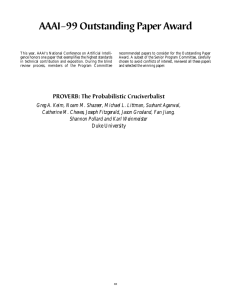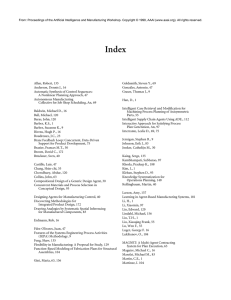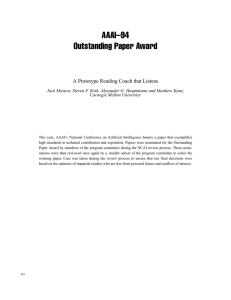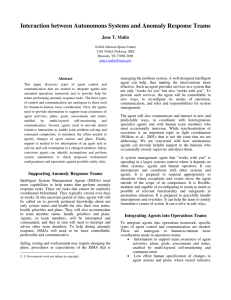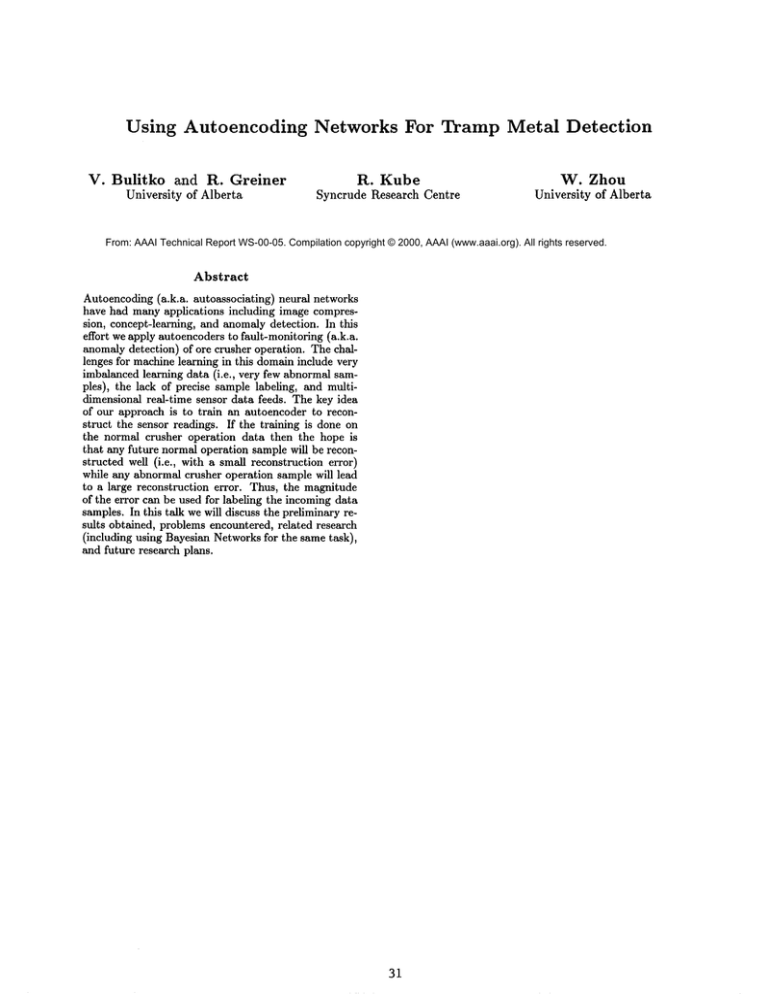
Using Autoencoding
V. Bulitko
University
and R. Greiner
of Alberta
Networks
For Tramp Metal Detection
W. Zhou
R. Kube
Syncrude
Research
Centre
University
of Alberta
From: AAAI Technical Report WS-00-05. Compilation copyright © 2000, AAAI (www.aaai.org). All rights reserved.
Abstract
Autoencoding (a.k.a. autoassociating) neural networks
have had many applications including image compression, concept-learning, and anomaly detection. In this
effort we apply autoencoders to fault-monitoring (a.k.a.
anomaly detection) of ore crusher operation. The challenges for machine learning in this domain include very
imbalanced learning data (i.e., very few abnormal samples), the lack of precise sample labeling, and multidimensional real-time sensor data feeds. The key idea
of our approach is to train an autoencoder to reconstruct the sensor readings. If the training is done on
the normal crusher operation data then the hope is
that any future normal operation sample will be reconstructed well (i.e., with a small reconstruction error)
while any abnormal crusher operation sample will lead
to a large reconstruction error. Thus, the magnitude
of the error can be used for labeling the incoming data
samples. In this talk we will discuss the preliminary results obtained, problems encountered, related research
(including using Bayesian Networks for the same task),
and future research plans.
31

